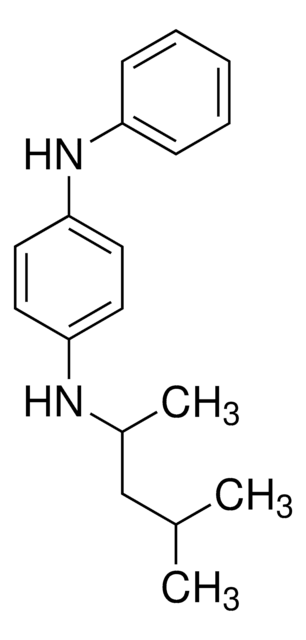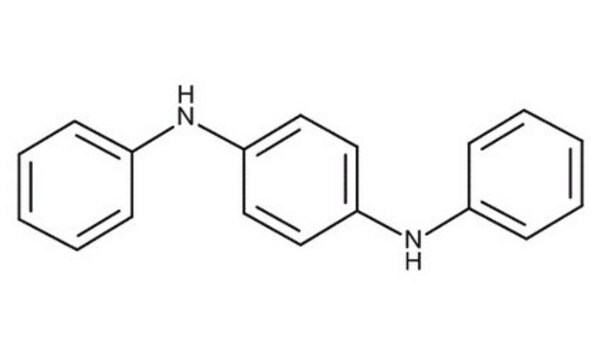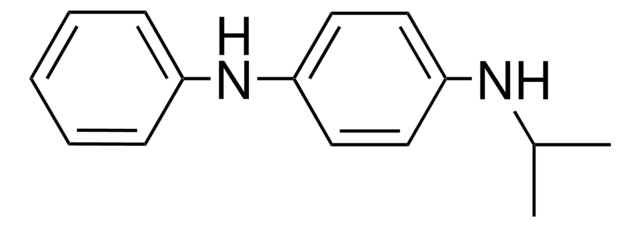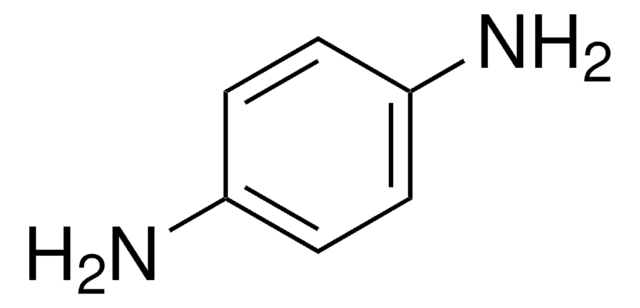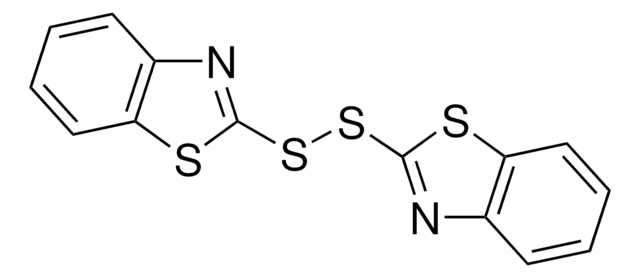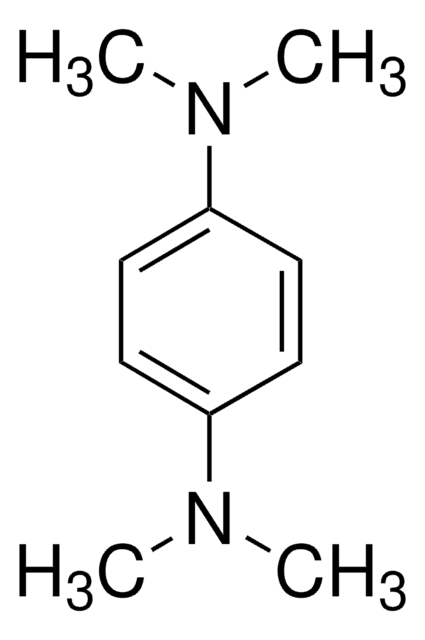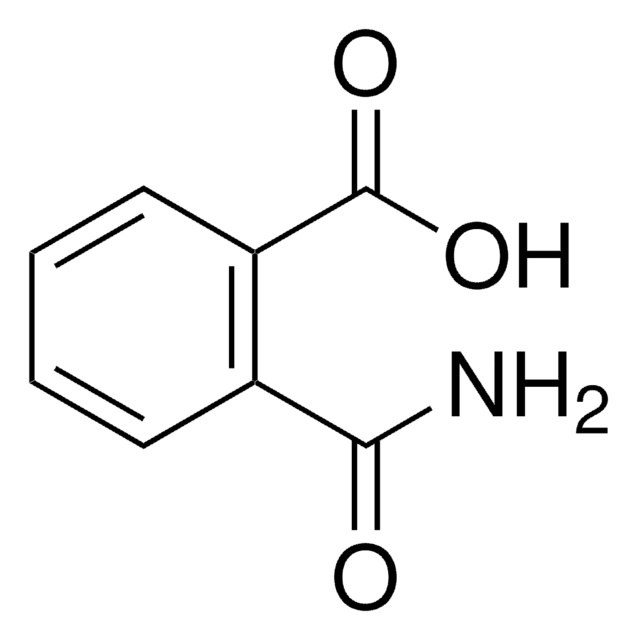292265
N,N′-Diphenyl-p-phenylenediamine
98%
Sinonimo/i:
N,N′-Diphenyl-1,4-phenylenediamine
About This Item
Prodotti consigliati
Livello qualitativo
Saggio
98%
P. ebollizione
220-225 °C/0.5 mmHg (lit.)
Punto di fusione
143-145 °C (lit.)
Stringa SMILE
N(c1ccccc1)c2ccc(Nc3ccccc3)cc2
InChI
1S/C18H16N2/c1-3-7-15(8-4-1)19-17-11-13-18(14-12-17)20-16-9-5-2-6-10-16/h1-14,19-20H
UTGQNNCQYDRXCH-UHFFFAOYSA-N
Cerchi prodotti simili? Visita Guida al confronto tra prodotti
Categorie correlate
Applicazioni
- TPA-induced inhibition of gap junctional intercellular communication is not mediated through free radicals.: This research explores the role of N,N′-Diphenyl-p-phenylenediamine (DPPD) in cellular communication, providing insights into its applications in high-performance rubber stabilizers and life science manufacturing chemicals. (Hasler et al., 1990).
Avvertenze
Warning
Indicazioni di pericolo
Consigli di prudenza
Classi di pericolo
Aquatic Chronic 3 - Skin Sens. 1
Codice della classe di stoccaggio
11 - Combustible Solids
Classe di pericolosità dell'acqua (WGK)
WGK 1
Punto d’infiammabilità (°F)
Not applicable
Punto d’infiammabilità (°C)
Not applicable
Dispositivi di protezione individuale
dust mask type N95 (US), Eyeshields, Faceshields, Gloves
Scegli una delle versioni più recenti:
Possiedi già questo prodotto?
I documenti relativi ai prodotti acquistati recentemente sono disponibili nell’Archivio dei documenti.
I clienti hanno visto anche
Il team dei nostri ricercatori vanta grande esperienza in tutte le aree della ricerca quali Life Science, scienza dei materiali, sintesi chimica, cromatografia, discipline analitiche, ecc..
Contatta l'Assistenza Tecnica.